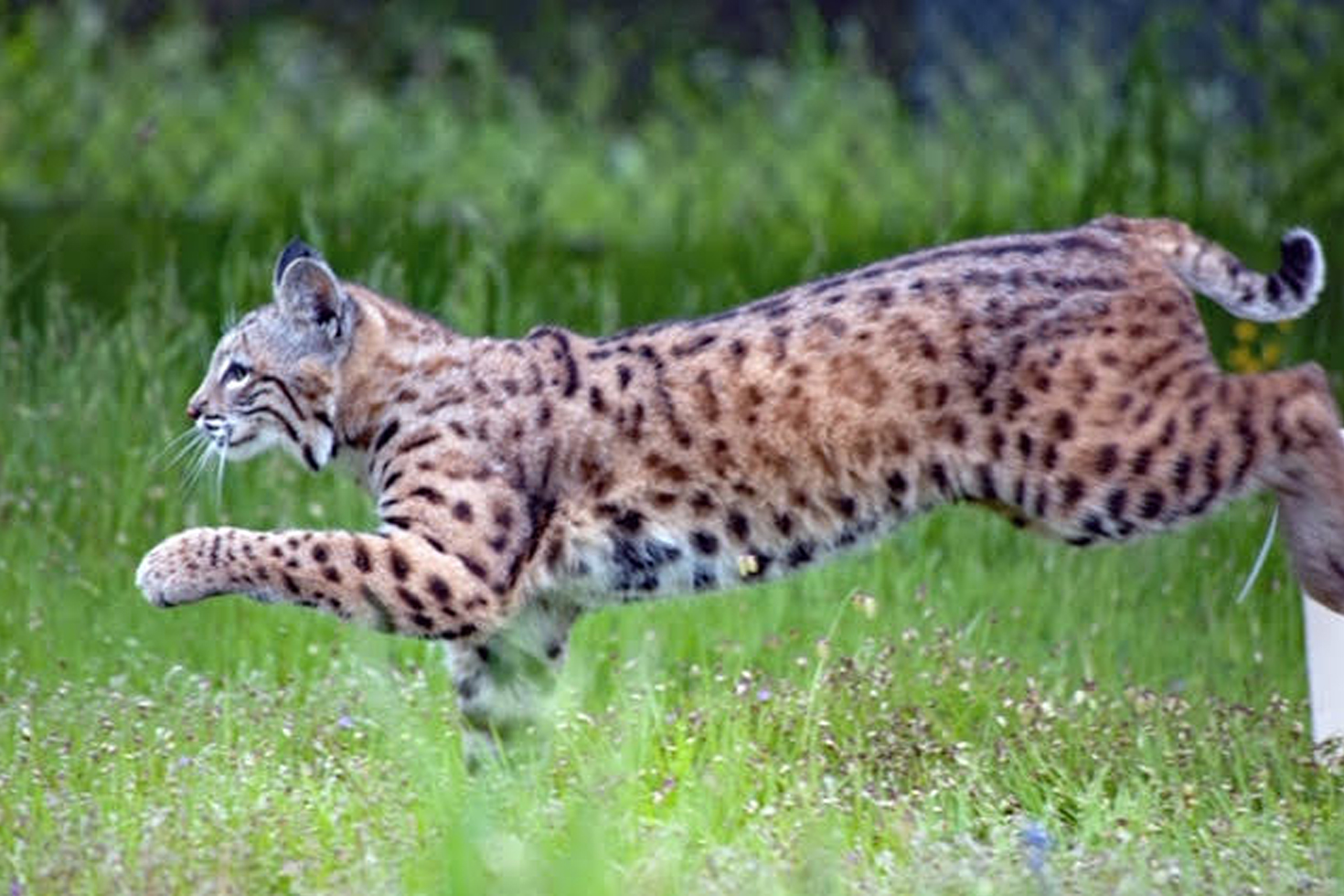BOBCAT

Bobcats are medium-sized wildcats that roam throughout much of North America, and adapt well to diverse habitats such as forests, swamps, deserts, and even suburban areas.Bobcats have long legs, large paws, and tufted ears. Most bobcats are brown or brownish red with a white underbelly and short, black-tipped tail. The cat is named for its tail, which appears to be cut or “bobbed.”
They are very shy animals and would prefer not to be around humans. However, because of our encroachment onto their habitat, you are bound to see them with more frequency. Hunters and the automobile are this animal’s worst enemies, but predators such as foxes, owls may attack bobcat kittens.
Rabbits and hares make up two thirds of the Bobcat’s diet. The remainder consists of small rodents such as squirrels, rats and mice.
The various calls of the Bobcat sound much like those of the domestic cat. When threatened, the animal utters a short, sudden, and resonant “cough-bark.” It yowls loudest and most often during the breeding season.
Bobcats are solitary animals, coming together only for courtship and copulation. After several months in the den, the kittens begin venturing out in the world with their mother. The young are typically independent and disperse from one another between 1-1 ½ years of age.
Preventing a problem
Solving a problem
